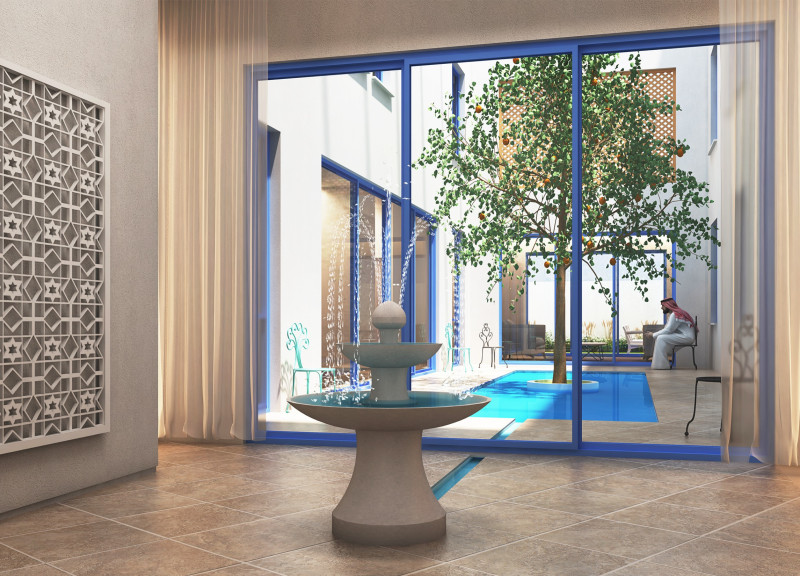5 key facts about this project
The design prioritizes functionality, establishing spaces that accommodate a diverse range of activities. The layout is organized with careful consideration of movement and interaction, promoting an easy flow between various areas. Public spaces encourage social interaction, while private zones provide necessary solitude, ensuring a comfortable living experience. The architectural design is a testament to how careful spatial organization can improve the quality of life for users.
One of the distinctive features of this project is its materiality. The careful selection of materials reflects both aesthetic intentions and functional demands. Concrete is employed for its structural capabilities, providing durability and strength. Extensive use of glass invites natural light into interior spaces, blurring the line between the indoors and outdoors, while also showcasing the surrounding environment. Steel elements provide both support and a modern aesthetic, creating a dynamic interplay with the other materials used. Wood accents in finishes add warmth to the spaces, fostering a sense of connectivity to nature.
The architectural design embraces unique approaches that set it apart from standard constructions. A significant aspect is the incorporation of sustainable design principles throughout the project. Features such as passive solar heating, water-efficient landscaping, and the use of recycled materials are integrated into the design framework. This commitment to sustainability not only reduces the environmental footprint of the project but also serves to educate and inspire the community about the importance of eco-friendly practices.
Landscaping plays a pivotal role in the overall experience of the architecture. The project seamlessly integrates greenery around the structure, emphasizing ecological sensitivity. These softscape elements not only enhance aesthetic value but also promote biodiversity within the urban setting. Terraces and green roofs are incorporated, not solely for environmental benefits but also to provide recreational spaces for users, enriching their daily experience.
The architectural design is more than just a building; it serves as a catalyst for community interaction and a model for modern living. Its thoughtful approach to design illustrates the power of architecture to shape social dynamics and improve living conditions. Every detail, from the spatial organization to the material selection, reflects a dedication to creating a meaningful environment.
This project represents a modern interpretation of architectural ideas that consider the broader implications of built environments on their surroundings and inhabitants. It stands as a framework for understanding how thoughtful design can influence lifestyle, promote sustainability, and nurture community ties.
For a deeper understanding of this project, including insights into its architectural plans, sections, and the underlying design concepts, the presentation of the project is worth exploring. Engaging with these materials will provide further context and detail, revealing the complexities and innovations that define this architectural endeavor.


 Amir Salomon
Amir Salomon 























